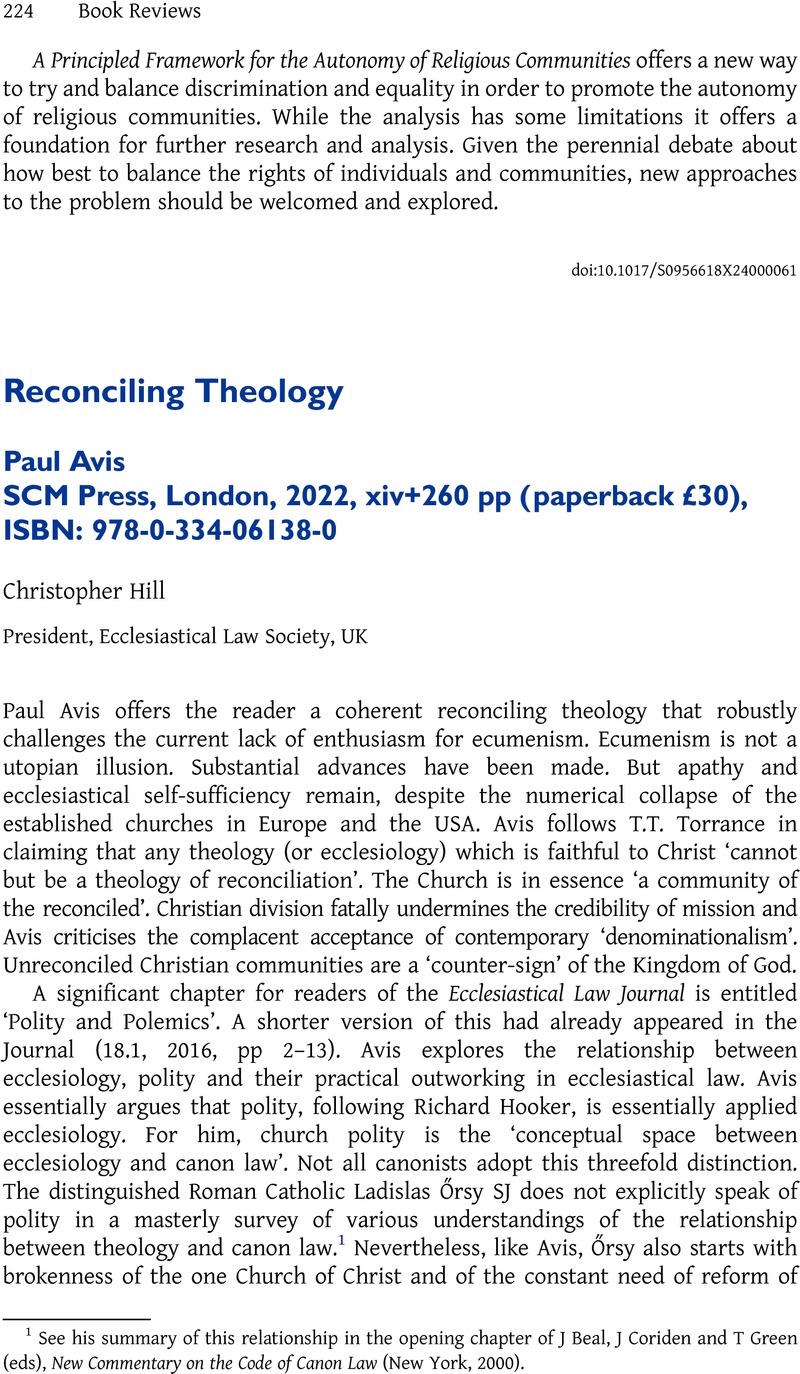No CrossRef data available.
Published online by Cambridge University Press: 09 May 2024

1 See his summary of this relationship in the opening chapter of J Beal, J Coriden and T Green (eds), New Commentary on the Code of Canon Law (New York, 2000).
2 Anglican Consultative Council, The Principles of Canon Law Common to the Churches of the Anglican Communion (London, 2022), 35.
3 E Radner, A Brutal Unity: The Spiritual Politics of the Christian Church (Waco, TX, 2012), 403.
4 C Clifford and M Faggioli (eds), The Oxford Handbook of Vatican II (Oxford, 2023), 432 ff.
5 Co-editor of New Commentary on the Code of Canon Law, see note 1.